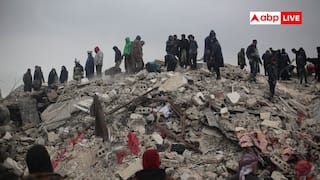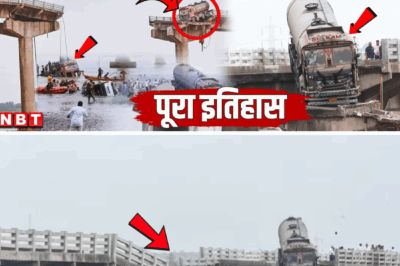Mild Earthquake of 4.4 Magnitude Jolts Haryana’s Jhajjar, Tremors Felt Across Delhi-NCR
O.P. Mishra, Director of the National Center for Seismology (NCS), spoke to Aaj Tak regarding the earthquake that struck today in the Jhajjar area of Haryana. He explained that the earthquake measured 4.4 on the Richter scale and occurred at a shallow depth of just a few kilometers. According to Mishra, such seismic activity in Jhajjar is not unusual, as the region has experienced earthquakes in the past. Due to the shallow depth, the tremors were widely felt by residents.

Mishra categorized the quake as falling within the micro to moderate range, noting that it was not as impactful as the major earthquakes that occur in the Himalayan region or those caused by plate interiors. He advised caution, especially around old or damaged structures, but assured that there was no major cause for alarm. Mishra added that aftershocks, if any, would likely be of lower magnitude—around 3.3 to 3.1—and would only cause mild shaking.
When asked about the possibility of stronger aftershocks, Mishra clarified that aftershocks are always of lower intensity than the main shock, typically by about 1.1 to 1.2 magnitude units. He said aftershocks are actually beneficial as they help stabilize the fault line by dissipating any remaining energy.

The epicenter of the earthquake was in Jhajjar, but tremors were felt across the entire NCR region, including Delhi, Faridabad, and even parts of Punjab and Haryana, due to the interconnected fault lines. Mishra emphasized that earthquakes do not kill people—poorly constructed buildings do. He noted that Delhi’s infrastructure has withstood past earthquakes and that newer buildings are being constructed according to updated seismic codes. Retrofitting and strengthening of old structures is also underway.
The government has undertaken microzonation studies of Delhi and the NCR to enhance earthquake resilience, and ongoing efforts continue to strengthen the region’s infrastructure. The impact of any future tremors will depend on the local geology and the structural integrity of buildings in affected areas.
Footage from Jhajjar showed chandeliers and ceiling fans swaying inside homes, illustrating the effects of the 4.4-magnitude quake. However, the quake lasted only about 10 seconds, meaning that by the time residents realized what was happening, the tremors had already subsided.
News
Bihar’s Darbhanga District Shaken by Daylight Firing, Residents Question Police Inaction
Bihar’s Darbhanga District Shaken by Daylight Firing, Residents Question Police Inaction Once again, the state of Bihar has been rocked…
The Politics of Humiliation: How Hate is Being Normalized in Uttar Pradesh
The Politics of Humiliation: How Hate is Being Normalized in Uttar Pradesh Greetings. My name is Naveen Kumar. Apologies if…
Tragic Bridge Collapse in Vadodara, Gujarat Claims 13 Lives
Tragic Bridge Collapse in Vadodara, Gujarat Claims 13 Lives A heart-wrenching incident occurred today in Vadodara, Gujarat, when a bridge…
Gauri Khan Brokedown after Shahrukh Khan Admitted To Hospital after A Heart Attack in I!CU!
Shah Rukh Khan Hospitalized After Reported Stroke Amid Severe Ahmedabad Heatwave Sad news has struck Bollywood fans as superstar Shah…
Kareena Kapoor Khan’s Health Worsens Amid Saif Ali Khan’s ₹15,000 Crore Property Loss
Kareena Kapoor Khan’s Health Worsens Amid Saif Ali Khan’s ₹15,000 Crore Property Loss Bollywood star Kareena Kapoor Khan has recently…
From YouTube Plot to M*rder: The Shocking Story Behind the Chitrakoot Insurance Scam
Chitrakoot Insurance Scam: Man Fakes His Death, Kills Innocent Victim for ₹2 Crore Policy A shocking case of insurance fraud…
End of content
No more pages to load












